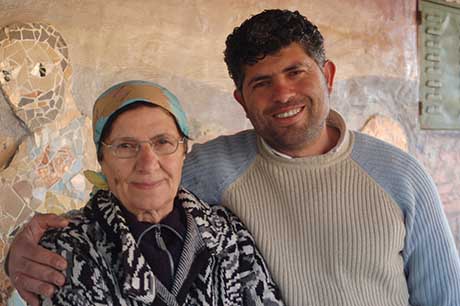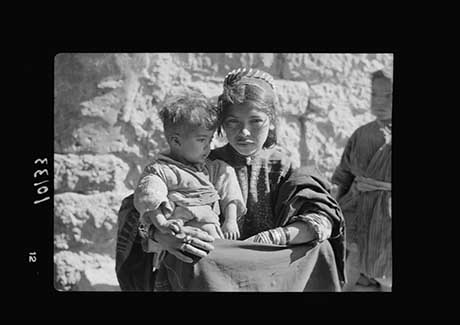Bethlehem Beyond the Wall Exhibition, Oct. 1-14
Nazareth College is hosting the international opening of Bethlehem Beyond the Wall, a new traveling exhibition that invites viewers to see a familiar place from a new point of view. This exhibition seeks to move beyond both myth and politics to show Bethlehem from the vantage point of the men, women, and children who have lived there over the past 150 years. Bethlehem is most recognized as the birthplace of Jesus, yet few know the city’s rich modern culture. Throughout history, Bethlehem has been a site of tragedy, struggle, and survival. Bethlehem, and its surrounding villages, is now home to 100,000 people, and the site of three refugee camps created by the United Nations to house people displaced by the war in 1948. The city is divided by the wall first erected by the State of Israel in the West Bank in 2002.
The exhibition takes place at the College’s Lorette Wilmot Library Lobby, Oct. 1-14, 7 days a week from 10 a.m. - 7 p.m. Nazareth College is located at 4245 East Avenue, Rochester, N.Y., 14618. For more information contact PhotographsAnd@gmail.com.

Daoud and Milade on The Nassar Farm, Bethlehem, 2015
credit: Tent of Nations
The exhibition time span — roughly 1880 to the present — coincides with the era in which photographs of Bethlehem traveled around the world. The exhibit draws from the collection of photographs that the American Colony Company made between 1880 and 1945 for postcards, lantern slides, illustrated books, magazines and journals. The years from 1947 through 1949, are narrated by individual survivors of the war they called the Nakba (or Catastrophe), interviewed in 2013 for the documentary film Voices Across the Divide. Photojournalism and a drone-based video is used, along with vintage maps and magazines, as well as images from family albums and private collections to document the years between 1947 and the present. The exhibition seeks to reveal the everyday lives of people whose stories do not reach the headlines. The people who work their farms, raise their families, continue religious traditions (Muslim and Christian), and enjoy contemporary culture, music, education, and technology. The most recent viewpoint appears in the form of original art, by young painters whose work also appears as graffiti and murals on the walls that line the streets of the Dheishe and Aida Refugee Camps.
Nazareth College Center for Public History students are working with co-curators Mary Panzer and Bshara Nassar on the exhibition. The curators are using materials from The Library of Congress (Washington DC), Institute of Palestine Studies (Washington, DC), Voices Beyond the Divide/Alice Rothschild, private collections, individual artists and photographers. The exhibition is produced by the Museum of the Palestinian People, based in Washington, D.C. This exhibition made possible by the Josephine and Paul Wenger Fund for Peace Through International Understanding of the First Unitarian Church of Rochester and JVP-Rochester along with many other generous supporters.
For More Information
Nazareth University is an inclusive community of inspired learners, educators, and changemakers who for nearly 100 years have been driven by a bold commitment to action, empathy, equity, and leading innovation for the common good. Impact experiences are at the heart of a Nazareth education, preparing each student to discover within themselves the potential to cultivate positive change in their life's work, in any career field, and in a world that is constantly evolving and infinitely interconnected.
Our broad academic offerings present a range of study options typical of larger universities, yet achieved in our supportive campus culture. Nearly 2,100 undergrad and 600 graduate students enroll in degree and certificate programs and engage in collaborative, transformative learning experiences, preparing for the professions and society of today and tomorrow. In a learning community that purposefully integrates liberal arts and professional programs, Nazareth University graduates are able to launch a lifetime of impactful leadership in communities and workplaces near and far.

Young Woman and Child, Bethlehem, 1935 credit: Matson Photo Collection, Library of Congress